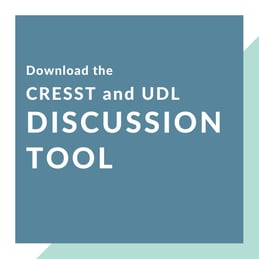Look. I’m probably the last guy that should be talking about quantum physics, and I’m going to do it anyway, because I think there is something in that work that can help us understand our work in education.
So let’s see if I can string you along for just a bit. Let’s talk about string theory (see what I did there?). String theory is based on the idea that all particles, from photons to quarks, are a single dimension of strings versus zero dimension points. You don’t even really have to know what that means, except that, according to the MasterClass article “String Theory Explained: A Basic Guide to String Theory,” if string theory were to hold up, “it would serve as a single mathematical model for describing the nature of the universe—a ‘theory of everything’ that would replace the Standard Model of physics, which does not explain gravity.”
That is why it is often referred to as the Unified String Theory; it unifies the four fundamental forces of nature: electromagnetism, the weak force, the strong force, and gravity.
Like physicists, educators are constantly seeking a unifying framework or model that describes the complex and dynamic craft of teaching and learning. According to Dr. Christian J. Wiebell in his doctoral dissertation on the 7 Principles of Learning, “There does not now exist, nor will there ever exist, any single theory of learning that is broad enough to account for all types of learning yet specific enough to be maximally useful in practical application.” This may be true, but I believe that the Universal Design for Learning (UDL) framework comes pretty darn close!
Many misunderstand the UDL framework strictly to be a tool or set of guidelines for designing general education learning experiences that can be better accessed by students with disabilities. This is true for many reasons:
- In 1984, according to CAST, “five clinicians from North Shore Children’s Hospital in Salem, MA—Anne Meyer, David Rose, Grace Meo, Skip Stahl and Linda Mensing— found [CAST] at North Shore Children’s Hospital. The focus: How can computer technology enhance learning for students with learning disabilities?”
- The Individuals with Disabilities Education Act (IDEA 2004) refers to the definition of Universal Design that was used in the Assistive Technology Act of 1998.
- UDL is included in the section of the Common Core State Standards called Application to Students with Disabilities.
While universally designed learning experiences definitely do benefit students with disabilities, it is much more than that. It is a framework for designing learning experiences that is “maximally useful in practical application” for ALL students. It is based on cognitive neuroscience research (Meyer, et al. 2002; Rose, Rouhani, et al., 2013; Rose, 2016), developmental psychology, ( Lev Vygotsky 1962, 1996), and learning theories from Bower & Hilgard (1981) to Gredler (2009) and Bloom and Piaget to name a few.
Many fail to recognize that the Universal Design for Learning Guidelines created by CAST aim to:
- amplify learning for all through assistive technologies;
- develop independent, expert learners;
- create equitable, identity-affirming learning environments; and
- develop engaging, deep learning opportunities that maximize transfer and generalization.
Micheal Fullan’s organization, New Pedagogies for Deep Learning, has been leading work around the globe on developing learning experiences that are grounded in generalizations to maximize learning and transfer.
Perhaps examining the congruence among the research and frameworks that have been developed to guide both deeper learning and inclusive learning will help others to recognize the more comprehensive value of the UDL guidelines to not just meet the needs of historically marginalized learners, but all learners.
Perhaps the solution is to be found at the intersection between learner variability and college and career readiness.
Perhaps the fundamentals of deeper learning and Universal Design for Learning create a Venn diagram with deep, accessible learning at the center.
In partnership with the Center on Standards and Assessment Implementation, the National Center for Research on Evaluation, Standards, and Student Testing (CRESST) developed a series of resources to assist educators in planning teaching and learning around College- and Career-Ready Standards (CCRS).
One of the publications, the Fundamentals of Learning (FOL), draws from leading theory and research about learning and assessment and from an examination of the Common Core State Standards. This resource focuses on three fundamental aspects of learning that support K-12 students' achievement of the CCRS: (1) Making Meaning, (2) Participating and Contributing, and (3) Managing Learning.
Perhaps leveraging the differences and points of confluence between this tool and CAST's Universal Design for Learning Guidelines can help provide better instruction and learning outcomes for all students.
 We envision that this crosswalk (pdf) (word doc) can be used by school leaders, coaches, and mentors to deepen teacher understanding about the types of instructional practices and learning experiences that will help all students to become expert learners.
We envision that this crosswalk (pdf) (word doc) can be used by school leaders, coaches, and mentors to deepen teacher understanding about the types of instructional practices and learning experiences that will help all students to become expert learners.
Feel free to try it. No strings attached!



